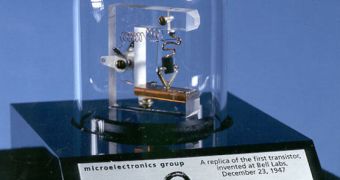Ever since computers were invented and developed, numerous scientists and science-fiction authors alike have been fantasizing about connecting the two. We are not talking about cyborgs necessarily, but about allowing humans to interact with machines directly, at a cellular level, without the need for cumbersome peripherals such as mice and keyboards. Now, that dream may have just been brought one step closer by researchers, who created a new type of transistor.
The innovation is capable of bridging the once-thought-wide gap between men and machine. According to the group that created it, the small piece of equipment can be controlled by molecules that generally play a crucial role in powering up biological, living cells. If the new transistor can be further researched and developed, then the nanoscale device could soon make its way into various fields of research, science and industry. One possible application that immediately springs to mind is using it for the next generation of medical devices or prosthetics. These could be wired directly to the human body, scientists say, without the need for external power sources.
“Our devices make a bridge between the biological world and the electronic world. In effect, we made a biological protein talk directly with a nanoelectronic circuit,” explains one of the researchers who was involved directly in creating the new transistor, expert Aleksandr Noy. He and the other co-developers are based at the US Department of Energy's (DOE) Lawrence Livermore National Laboratory (LLNL), in California, LiveScience reports. The scientist explains that, by modifying ATP (adenosine triphosphate) concentrations in the new transistors, the molecule that powers up all cells in the human body become able to control the device's ability to conduct electricity.
The conductivity of the electronic device change directly-proportional to the concentration of ATP that was applied on it. The applications for the new technology are basically limitless. One could image, for example, creating instruments that convert thoughts into words, or that allow people to control other electronic robots by thought power alone. However, in order for this to become a reality, “ we will need to have a way for our [brain cells] to talk to the electronic systems. I think what we demonstrated is a first step towards that distant goal,” Noy says.

 14 DAY TRIAL //
14 DAY TRIAL //